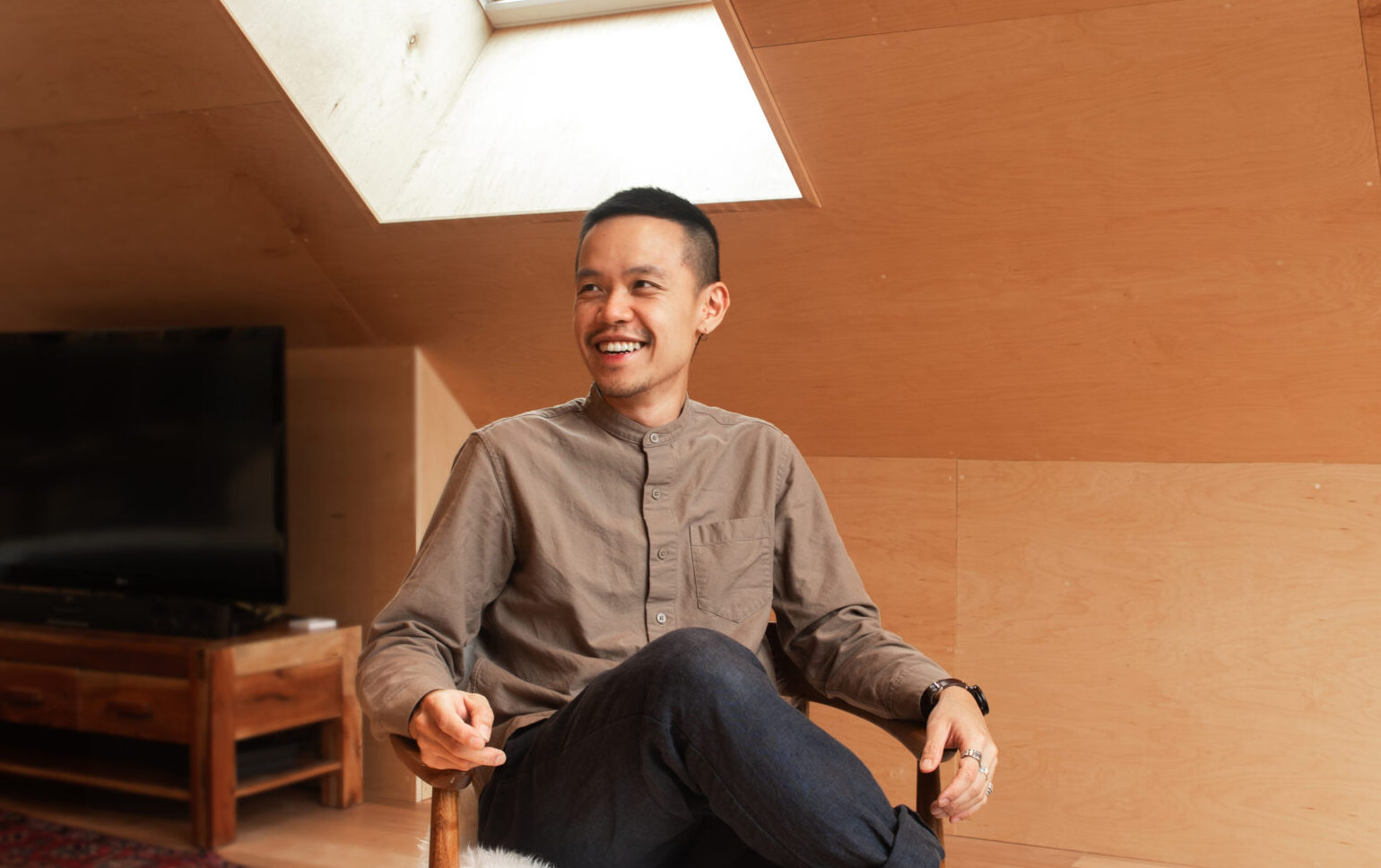
The Office for Sustainable Design Architecture (osda) is a newly founded architecture firm based in Saint John, New Brunswick.
Nilton’s inclination to entrepreneurship began during his school days, where his passion for sustainable design was first ignited. Following 11 years of experience with various global design firms and sustainable concepts, he decided it is the right time for him to start his entrepreneurial journey.
A pivotal moment came while Nilton was deeply engrossed in a collaborative project with a consultant in Ontario. The project required developing passive house design solutions to combat climate change and attain net-zero objectives. Throughout this venture, he noticed a gap in New Brunswick where there were only a few individuals equipped to handle such specialized design work, resulting in the necessity to engage external experts from larger urban areas.
This realization motivated Nilton to make a wholehearted commitment to the project, undergo the requisite training, and secure the necessary licenses to become a certified passive house consultant. In his pursuit of sustainable design excellence, he recognized that founding his own firm would be a crucial step toward achieving this goal.
Enter, osda – Office of Sustainable Design Architecture.
Supporting New Brunswick’s Climate Change Objectives
The government of New Brunswick has unveiled an updated climate change action plan, named “Our pathway towards decarbonisation and climate resilience”, outlining a comprehensive strategy for reducing greenhouse gas emissions and preparing for climate change. The plan emphasizes government leadership and accountability, with set targets and timelines, and promises to make New Brunswick a hub for green investments and technology.
New Brunswick has already made significant strides, achieving a 37% reduction in emissions since 2005. The government has pledged to further lower emissions by 46% below 2005 levels by 2030, aligning with the nationwide goal of achieving net zero emissions by 2050. The plan outlines both short and long-term actions, ranging from incentivising zero-emission freight transport to ensuring equitable access to energy efficiency programmes for New Brunswickers. Other goals include setting clear electricity efficiency targets and developing a performance standard for landfill gas management systems.
osda’s expertise makes it a critical player in the successful implementation of New Brunswick’s climate action plan. With extensive experience in sustainable design, osda provides innovative architectural solutions that align with these net-zero and energy efficiency goals. As experts in passive house and net zero design, osda is uniquely positioned to help clients transition towards a more sustainably built environment, creating buildings that are not just energy-efficient, but also comfortable, durable, and affordable. osda’s commitment to sustainable design not only contributes to the provincial and federal goals, but also offers healthier, more resilient living spaces for the residents of New Brunswick.
Responding to Changing Demographics
Saint John’s development plan anticipates a significant population surge over the next decade, with a target growth of 25,000 people, including 12,000 newcomers. The rising housing demand, underscored by an alarmingly low vacancy rate of 0.1%, further reinforces the need for innovative, efficient, and affordable housing solutions.
Moreover, there’s a growing preference among the younger generation for wellness and sustainability, driving the demand for environmentally friendly homes with high-performance comfort. osda is poised to address these market trends.
Beyond individual building projects, osda aspires to become the foremost expert in climate-specific building models and details in New Brunswick, particularly in Saint John. This commitment to efficiency ensures competitive pricing, making sustainability consultancy more accessible to municipalities, developers, and local architects. Ultimately, osda’s efforts contribute to a more sustainable future for the region.
Early Firm Accomplishments
This past November Association Heritage New Brunswick invited Nilton to participate as a guest speaker at their Annual General Meeting. The session centered around heritage preservation, energy efficiency trends, best practice design approaches and case studies for deep retrofits. It is crucial to create more energy-efficient buildings for the future and tend to our historical assets – preserving their heritage value while enhancing building envelopes with passive building principles. The session featured discussions with industry leaders from the province, fostered meaningful interactions among fellow heritage enthusiasts and stimulated valuable conversations. This opportunity aligns with osda’s mission to safeguard heritage and forge a better future for generations to come.
Another recent accomplishment was a design collaboration with JH Architecture for a French international school set to occupy the former New Brunswick Museum location. The primary objective of the design is to enhance the existing building’s condition by incorporating a more energy-efficient envelope and providing increased direct sunlight for educational purposes. Additionally, vacant rooftop areas have been repurposed as playgrounds and recreational spaces. The project features numerous vibrant colourful interior elements, fostering an engaging learning environment and encouraging students to engage socially and enhance their learning experiences inside and outside the classroom.
Naming of office of sustainable design in architecture
Nilton is a huge fan of Rem Koolhaas and his firm OMA (Office for Metropolitan Architecture). It has been a driving force throughout his career and architectural journey since his school days. Consequently, the name ‘osda’ (Office for Sustainable Design Architecture) reflects this influence. The deliberate use of lowercase letters, as opposed to the typical capitalization found in most architectural names, symbolically addresses the historical challenge of distinguishing uppercase letters from handwritten text—a problem resolved through digital technology. ‘osda’ embodies a commitment to embracing cutting-edge tools and technology to tackle architectural challenges.
The font utilized for ‘osda’ is sourced from the Bauhaus typography, a design movement that has significantly influenced the office’s work philosophy, underscored by the belief in the principle of ‘form follows function.’

Perspectives on Workplace Culture and Leadership
osda places a strong emphasis on team cohesion and collaboration. One of the key challenges they address is ensuring that every team member has access to the information they need, promoting inclusivity.
Unlike many firms that follow a linear project workflow, osda prioritizes an integrated approach from the project’s outset. This means that multiple objectives are engaged in the planning process right from the beginning. This approach ensures that team members have a comprehensive understanding of the project from its initial concept to its final execution, and can collaborate collectively on every detail throughout the entire process.
When Nilton looks toward the business’ growth, he reflects that fairness and collaboration will be integral to osda’s workplace culture. This means supporting staff in reaching their career aspirations, whether they plan to stay with the office long-term or not.
“I understand that the employer-employee relationship is not necessarily permanent, and believe that a healthy, mutually beneficial relationship is one where employers empower our employees to achieve their career goals, even if their journey eventually takes them elsewhere. I believe this fosters a much healthier working environment compared to a dynamic of attachment and resentment when someone eventually moves on from the firm.”
Working with Clients
Leadership is also a key consideration for how Nilton works with clients. In both B2C and B2B relationships, osda envisions client engagements unfolding through a collaborative process. He aims to work closely with clients to understand their specific needs, preferences, and sustainability goals.
osda’s approach emphasizes transparent communication, timely project updates, and a commitment to delivering innovative, environmentally friendly design solutions. Long-lasting client relationships are founded on trust, shared values, and a mutual commitment to sustainability and excellence in design.
The purpose of osda reflects an important aspect of architecture – its ability to contribute to the betterment of society. Although offten misunderstood as simply the aesthetic aspects of design – what people see – architects have incredible technical training and expertise. From sustainability mandates to affordable housing, architects’ expertise is invaluable to solving many of the most pressing challenges of the time.
A concluding note from Nilton
“As an immigrant architect in Canada, my path has taught me a lot and helped shape who I am. Starting with my love for sustainable design in school, my 11 years working in different design companies around the world led me to start my own firm, osda. In New Brunswick, I see a big need for building designs that help the environment and meet the province’s goals to cut down emissions and reach net-zero.
At osda, we work hard to create buildings that are good for the environment, don’t use too much energy, and are affordable. We focus on teamwork, bringing people together. We believe in clear, open talks with our clients to give them eco-friendly and creative building designs. I’m really looking forward to using my skills for my community.”



